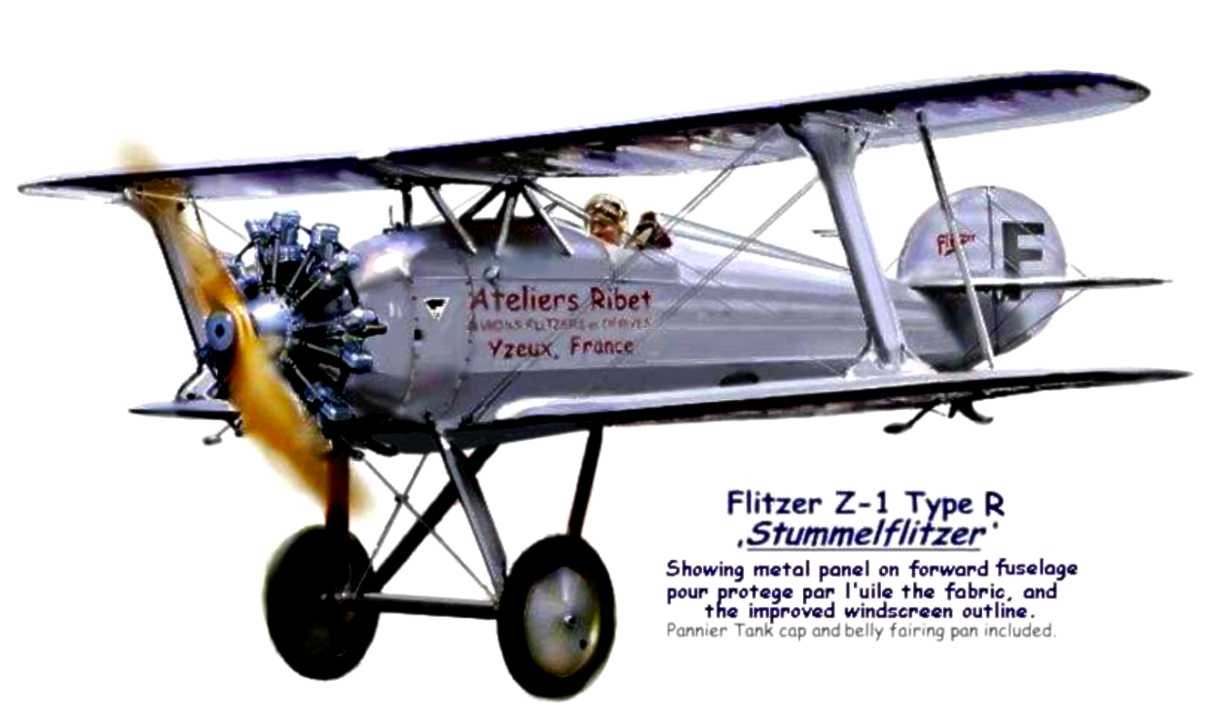
Flitzer Sport Flying Association
Engine Options

I was familiar with the HCI, the seven cylinder version of which, at 160 lbs. is perfect for the Z-21, although I must confess, from a purely aesthetic viewpoint, the cylinder heads are not that motors best feature if it were to be considered as an exposed (ie. not cowled or 'speed-ring' equipped) unit.
http://www.rotecradialengines.com/ - The Rotec seven cylinder radial, now I note named the Fireball, is far and away the best looking, and just superbly engineered motor of that configuration I've ever seen in its category. Its architecture is redolent both of Wright and Siemens, and at 100 hp. output, would be perfect for the Tigerfalk, and possibly that dedicated Douglas fir Flitzer development (with overtones of Polikarpov I-5), the SK26, both of which prototypes remain uncompleted at this time. My Tigerfalk was designed around a French-built, Ca 1938, 90 hp. 5-cylinder Salmson 5AQ radial engine, but the Rotec is about 40 lbs. lighter, and is equipped with an adjustable airscrew (that's an old fashioned English word for propeller) as standard.
At about 195 lbs. weight, the Rotec is a bit too heavy for the basic Flitzer, and is quite an expensive piece of kit. But it is mouth-wateringly desirable all the same.
Amongst the various designs for which I have provided feasibility studies is the evergreen Bucker 133 Jungmeister, to 87% scale, which would have a wingspan of 19' 3" approx. Designed with a Douglas fir primary structure, with 115 sq.' wing area and equipped with 100 hp., its wing and power loadings would be similar to the 160 hp. Siemens original. This, by the way, would be nothing like the slightly smaller Jungster, designed in the 1960s by Rim Kaminskas.
I had been looking for a suitable project for a recently acquired, re-buildable 1938 100 hp. Cirrus, air-cooled, inverted in-line motor, and have always admired the Bu 133V1, the prototype Jungmeister, D-EVEO, which was equipped with a 135-140 hp. Hirth in-line motor. This very elegant aeroplane featured a separate head rest, like the first limited production types, and was faster and flew 'knife' flight manoeuvres better than the more well known standard production Bu 133c, with the Siemens radial.
Flying a stock CASA-built 125 hp. ENMA Tigre-powered Bucker Bu 131Jungmann, my late brother, the 13 times British Aerobatic Champion and Team Leader, Neil Williams, flew synchronised aerobatics on one occasion, with a Bu 133, powered by a Siemens. There were uncommanded changes of lead position, as from time to time, one or other machine would demonstrate its superiority, but certainly the cleaner, lower-powered Jungmann was faster on the level, and flew much better in knife edge flight. The Tigre was heavy for its output, and slow revving. The Bu 133V1 is in many ways a scaled down Jungmann, and if built light, at 87%, with a genuine 100 hp. available from the in-line Cirrus, such a replica would probably outperform even a 150 hp. Tigre IV-powered Bu 131.
If I proceed with this design, the 1st. prototype would, appropriately, be in-line powered, but subsequent copies, assuming that there would be a demand for a lightened, slightly smaller, timber-framed affordable Jungmeister (and who can doubt it?) would be ideally equipped with the Rotec 7-cylinder motor, to exactly replicate the actual production model, including its performance!
This is another line of development, separate from the Flitzers, but sharing constructional features of both Flitzer and Tigerfalk, cheaper and much easier to build than a real Bu 133. It would also feature the same wing section as the Z-1, the superb USA 35B, which is very similar to the section employed by Bucker, ie. it was not semi-symmetrical, but slightly 'cambered'.
My problem is that I need a fully equipped and funded workshop and staff just to keep up with all these ideas!
Best wishes,
Lynn

Anzani-powered Flitzer



